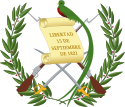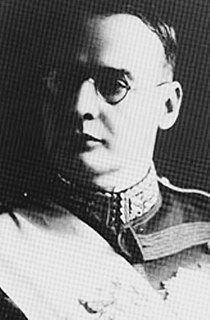
Lázaro Chacón González was the acting President of Guatemala from 26 September 1926 to 18 December 1926 and President of Guatemala from 19 December 1926 to 2 January 1931.
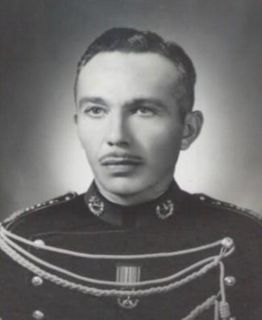
General elections were held in Guatemala on 3 March 1974. No candidate received more than 50% of the vote in the presidential election, resulting in Kjell Eugenio Laugerud García being elected president by Congress on 12 March. The Congressional elections were won by an alliance of the Institutional Democratic Party and the National Liberation Movement. Voter turnout was 46.41% in the presidential election.

General elections were held in Guatemala on 1 March 1970. No candidate received over 50% of the vote in the presidential election, resulting in Carlos Manuel Arana Osorio being elected by Congress on 21 March. The National Liberation Movement-Institutional Democratic Party alliance won the Congressional elections. Voter turnout was 53.82% in the presidential election and 53.26% in the Congressional elections.
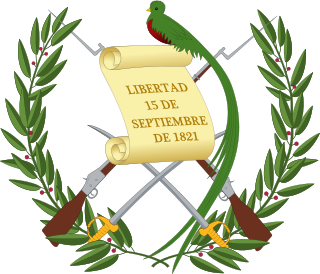
Parliamentary elections were held in Guatemala between 24 and 26 January 1947 in order to elect half the seats in Congress. The Revolutionary Action Party won a plurality of seats.
A presidential election was held in Guatemala on 17–19 December 1944. The October Revolution of 1944 had overthrown Jorge Ubico, the U.S. backed dictator of Guatemala. A junta composed of Francisco Javier Arana, Jacobo Árbenz and Jorge Toriello took power, and quickly announced presidential elections, as well as elections for a constituent assembly. The subsequent elections took place in December 1944, and were broadly considered free and fair, although only literate men were given the vote. Unlike in similar historical situations, none of the junta members stood for election. The front-runner was the philosophically conservative University professor Juan José Arévalo, of the Renovación Nacional. Arévalo's closest challenger was Adrián Recinos, whose campaign included a number of individuals identified with the Ubico regime. The ballots were tallied on 19 December 1944, and Arévalo won in a landslide, receiving more than four times as many ballots as the other candidates combined.

A referendum on the presidential term of Jorge Ubico was held in Guatemala on 25 May 1935. If approved, it would allow Ubico to override the constitutional limitation on serving two consecutive terms in office. It was reportedly approved by 99.85% of voters.
Jorge Ubico y Castañeda’s presidential term was extended to 15 March 1949 by a Constituent Assembly on 11 September 1941. Assumed office 15 March 1943.

General elections were held in Guatemala on 5 December 1926. The presidential election resulted in a victory for Lázaro Chacón González, who received 88.6% of the vote. Whilst the elections were rigged, the Progressive Liberal Party did manage to win some seats in the Congress.
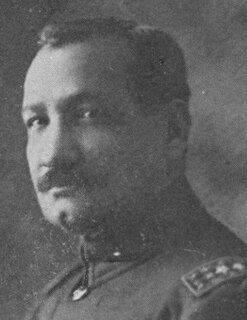
A presidential election was held in Guatemala on 15 December 1921.

Presidential elections were held in Guatemala during seven days in September 1898. Prior to the elections Manuel Estrada Cabrera had established the first real political party in the country's history by admitting people from outside the influential liberals to the Liberal Party.

Presidential elections were held in Guatemala on 11 April 1910. Manuel Estrada Cabrera was re-elected unopposed. He assumed the presidency on 15 March 1911.

Presidential elections were held in Guatemala on 17 January 1916. For the second successive election, Manuel Estrada Cabrera was re-elected unopposed. Despite there only being one candidate, voters were rounded up by the military and taken to polling stations, where they could only vote for Cabrera. Cabrera assumed the presidency on 15 March 1911.

Presidential elections were held in Guatemala on 27 August 1920. The result was a victory for Carlos Herrera y Luna, who received 95% of the vote.

Indirect presidential elections were held in Guatemala on 8 April 1920. After two decades of repression and dictatorial rule, political opponents of Manuel Estrada Cabrera organized the Unionist Party (PU) in 1919. Led by Conservatives tied to the landed oligarchy, the Unionists also attracted support among the urban proletariat, artisans, students, and industrialists.

Constitutional Convention elections were held in Guatemala in June 1927. Lázaro Chacón González put 33 senior officers on the official list of candidates, and whilst civilian leaders of the Liberal Party were also on it, the fact that most of them were members of the armed forces suggested that González was determined to dominate the Convention.
Federico Hernández de León was a Guatemalan writer, historian and journalist. He graduated from the Instituto Nacional Central para Varones of Guatemala, with a high school diploma in 1900. Active politically, was arrested during the last few years of the government of president Manuel Estrada Cabrera, being held in the Central Penitentiary of Guatemala until the president was deposed on April 14, 1920. After his release, he went straight to take over the Diario de Centro América semi-official newspaper of Guatemala at the time. Later, he directed Nuestro Diario along with Carlos Bauer Aviles.

Manuel María Orellana Contreras was a Guatemalan army officer and politician, and from 17 to 31 December 1930, de facto interim President of Guatemala, after leading a coup d'état that ended Baudilio Palma interim presidency. Palma, in turn, had been appointed president only four days earlier, when president Lázaro Chacón González suffered a stroke and was forced to resign. At the moment the coup took place, orellana Contreras was commander of the San Rafael de Matamoros Fort in Guatemala City.

Presidential elections were held in Guatemala in November 1873. Justo Rufino Barrios wins the presidency.

Presidential elections were held in Guatemala in November 1880.
